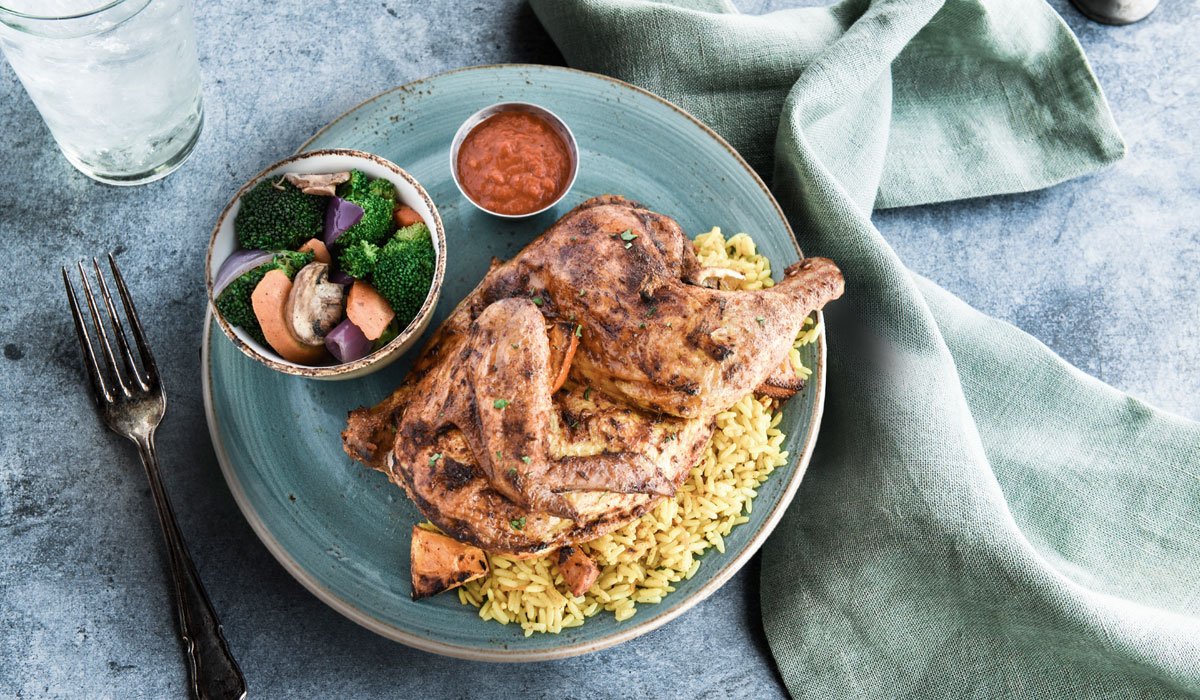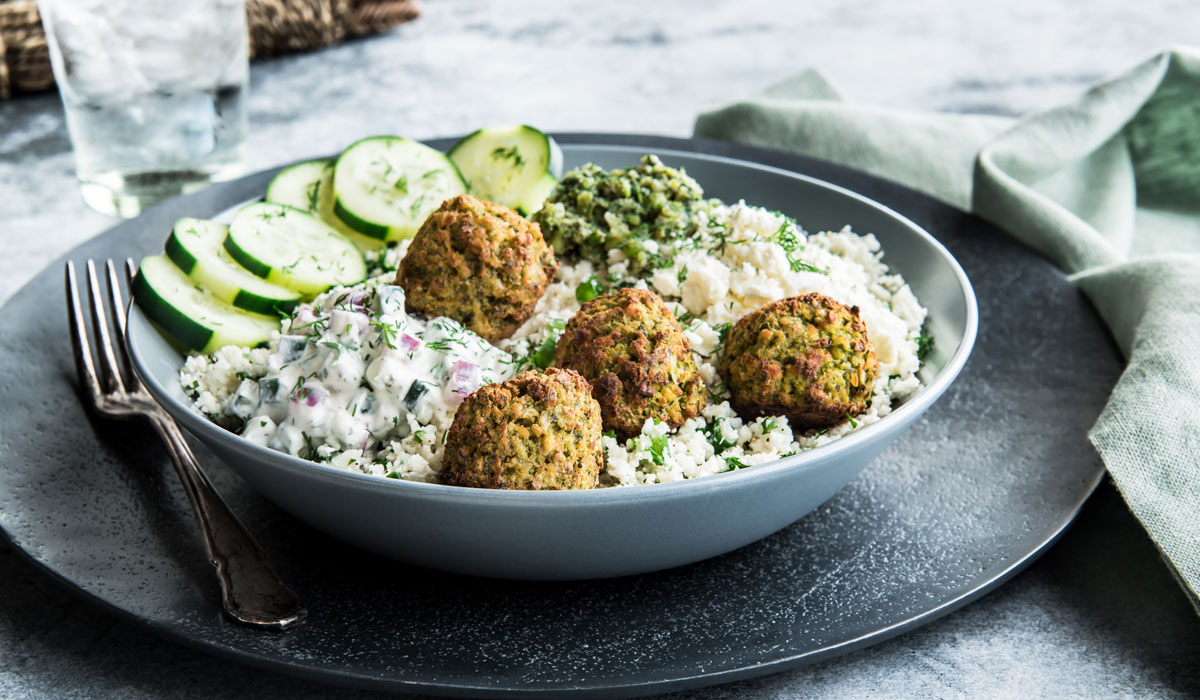The Mediterranean fast-casual category has been one of the most exciting growth stories of the last four or five years. Piggy-backing off the success of Mexican fast casuals like Chipotle, Moe’s, and Qdoba, several start-up Mediterranean concepts have similarly offered bold flavors to customers in bowls, wraps, and plates, providing familiar platforms with a touch of culinary adventure.
The Mediterranean category’s growth seemed to reach a tipping point earlier in August, when it was announced that Cava, a 65-unit chain that emerged from D.C. full-service restaurant Cava Mezze in the late 2000s, had entered into an agreement with competitor Zoës Kitchen to acquire that 260-plus-unit brand for around $300 million. Not only did the deal make waves throughout the restaurant industry, but so did the news of who had helped facilitate the deal. Ron Shaich, founder and former CEO of Panera Bread, helped finance the acquisition through his Act III Holdings investment firm, and will serve as chairman of the board for the combined companies.
In the wake of the acquisition announcement, Cava CEO Brett Schulman shared with us his vision for what is to come with the two Mediterranean chains—and the Mediterranean category as a whole.
How did the deal come to be?
It’s an opportunity that came our way that was really intriguing as we dove down into it and what it could mean for our brand and the business going forward. We got really excited about the potential of the two unique dining experiences rooted in our shared Mediterranean heritage.
Zoës has more experience and more restaurants. How can you learn from that and leverage those resources?
They’ve built a tremendous business that we’re excited to have join our family. They’ve got great expertise on the catering side; they’ve built a meaningful catering offering for their guests. I’m personally looking forward to working with leadership of both brands as we think about how to best support the business going forward at the scale that it will be.

What will the combined company look like?
It’s always been in our DNA that we were a Mediterranean culinary brand, not necessarily a fast casual or a restaurant. We were born out of a full-service restaurant, but we then started to grow our consumer packaged goods in Whole Foods around the country, and then took elements of both of those businesses and put it in a fast, customized format, which is Cava.
We view bringing Zoës into our family as having another unique dining experience in the café format, in addition to the digital channels that we’re building out and that we’re looking forward to continuing to grow across both dining experiences and both menus. We can use our shared heritage to bring our Mediterranean culinary authority to guests across the country, to neighborhoods like Bethesda or Birmingham, Plano or Pasadena.
I think that’s what is really exciting, is it’s just another way to bring our great flavors and healthy, no-compromised Mediterranean food to any neighborhood in the country. Our food has always been food for everyone, and I think this really validates that and puts a stamp on our ability to service any community across the country.
What will the culinary approach look like with the combined brands?
We’re looking to bring our capabilities in all different ways to the Zoës team—whether it’s our culinary, whether it’s our technology, and whether it’s anything we’ve developed over the years as we’ve built Cava—and marry that with the great capabilities that the Zoës team has built over the years. We think the combined business can be really powerful, certainly with our production capabilities as well. We produce our own hummus; we produce our own tzatziki. We’re not buying it from a distributor. So I think having that self-production is a great part of what we can bring to our guests, producing high-quality ingredients ourselves rather than purchasing it from a distributor.
When did Ron Shaich get involved, and what was his role in this process?
I first met Ron about six years ago when we had two restaurants. I’d been connected to Ron through a mutual contact, and struck up a relationship with him. He’s been a great supporter of the brand since then, and we’ve been able to catch up annually. He was a small investor in Cava for the past few years, and more recently in our Series D, once he left his role as CEO of Panera, he became a more meaningful investor.
With this transaction, he’ll join as chairman of our board. He’s currently a board member, but will move into the chairman role. I think our whole team is excited to have more of Ron’s time to spend on the business and helping to support us as we embark on this combination, and really making Cava a national brand across the country. To have his expertise and experience at the table as guidance as we work through the challenges of putting these businesses together is invaluable.
[image source_ID=”98211″]
Ron has an impressive history of scaling brands, with two successes in Au Bon Pain and Panera Bread. What can you learn from him as it relates to growth?
That’s what I really appreciate with our board, whether it’s Ron or Karen Kochevar, who was the CFO of Shake Shack and Union Square Hospitality for a number of years, working with Danny Meyer—just the perspectives they bring, whether it’s the people culture, whether it’s managing the enterprise at scale, and more importantly, how we best serve the needs of our guests. It’s invaluable experience to have at the table as we think through these strategic decisions.
How far has Mediterranean food come as a category in the U.S.? How much further is there to go?
Our growth has been a function of the category growing. We view Mediterranean as a lifestyle, not necessarily just as a place on the map. And I think with the wellness trends that continue to grow in this country, people understand the value of Mediterranean cuisine in the sense that they don’t have to make compromises to eat better. That’s been a big tailwind to the growth of the category. When you think about things like chickpeas and lentils and Greek yogurt, these are all really satisfying foods that have really great nutritional aspects to them. That’s been a trend that I don’t think is going to slow down, and will continue to grow.
You’re hitting a bit of a tipping point; it’s something that’s been growing for a number of years, but has been reaching a pretty large audience. I think another aspect is, if you look at the fact that 47 percent of Gen Zs come from an ethnic minority group, and that’s up from 41 percent of millennials—as our country becomes more diverse, people’s palates are becoming more diverse and more adventurous, and I think the bold flavors of our cuisine help to satisfy those adventurous palates while still being healthy, quality, satisfying foods.
“People are spending their calories like they’re spending their dollars—they spend it judiciously, and they don’t want mediocre food and they don’t want unhealthy food.” — Cava CEO Brett Schulman.
How has the Cava brand evolved as it’s grown to where it is today?
We like to say our food is looking out the windshield, not in the rearview mirror. We’re really serving where guests’ palates are going, and they want bold flavors. They want satisfying foods. People are spending their calories like they’re spending their dollars—they spend it judiciously, and they don’t want mediocre food and they don’t want unhealthy food. They want satisfying food, they want healthy food, and they want flavorful food, and we think we deliver on that.
What we get excited about is we see the diversity in our dining rooms, whether it’s gender diversity or age; our food appeals to all of them. The fact that you can walk in with your family or you can walk in with your friends or coworkers, and no longer do you have to have each other meet where half of you go to one restaurant and half of you go to another, everybody can walk in to our restaurants and be satisfied and be excited about what they’re eating.
Cava started with more of an urban growth strategy, and Zoës has been a little bit more suburban. How do you plan to tap into Zoës for more of a real estate strategy?
We actually have a pretty heavy suburban footprint; I think more than half of our locations. But we certainly get excited about Zoës expanding our reach into some of those other suburban markets or states where we don’t currently operate in. It goes back to my earlier comment that this allows us two unique dining experiences that can go into any neighborhood in the country, and that in some neighborhoods, we can coexist with both dining options—in some, the customized format might make better sense, in some the café format might make better sense. It’s great to have those options to best serve our guests needs.
We really view them as two distinct dining experiences. It’s something that goes back to our early roots. We have five full-service Cava Mezze restaurants in the D.C. area, and wanted to make sure that that experience is very unique from our fast casuals. Our fast casual wasn’t a less-expensive, stripped-down version of our full service. We serve lamb chops, flaming Saganaki cheese, scallop risotto at our full service. That’s a very different decision than coming into our customized Cava fast casual, and we want to make sure that our café and customized dining experience are going to be unique as well, where you’re having different occasions and reasons to go to both of them. Yeah, you might go to both of them for lunch or for dinner, but your experiences will be unique to each of those formats.











